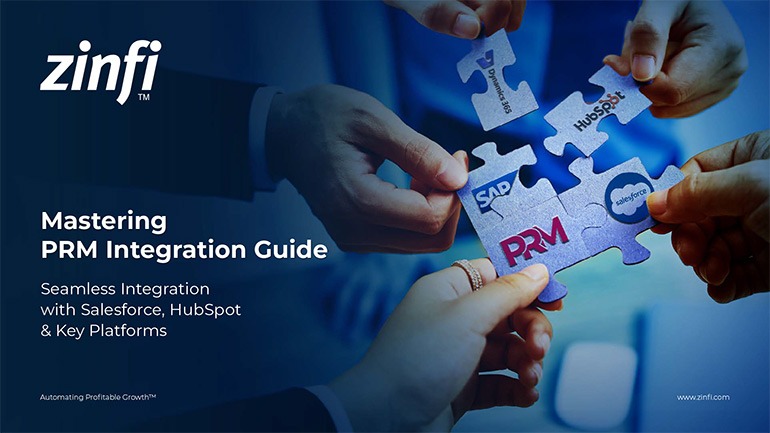Glossary - How to - Partner Onboarding Best Practices
How to Implement Partner Onboarding Best Practices?
Introduction
Partner onboarding is the structured process of integrating new partners into a business ecosystem, ensuring they have the tools, training, and support to succeed. This critical time in partner relationship management (PRM) directly impacts partner engagement, productivity, and long-term success. Organizations that invest in a robust onboarding process experience higher partner retention and improved collaboration.
Incorporating partner onboarding best practices into an automated PRM system enhances efficiency, reduces manual errors, and provides a seamless experience for new partners. With digital platforms, businesses can automate training modules, track partner progress, and provide real-time support, resulting in a more scalable and streamlined process.
Key Takeaways:
Develop a Clear Onboarding Plan:
A well-defined onboarding plan should outline objectives, timelines, and key performance indicators (KPIs), ensuring partners understand expectations and milestones.
- Create an onboarding checklist.
- Define success metrics and set clear goals.
- Assign a dedicated onboarding manager.
Provide Comprehensive Training and Resources:
Training should be engaging, interactive, and tailored to the partner’s role and industry.
- Offer online courses, webinars, and certification programs.
- Create an easily accessible knowledge base.
- Implement gamification techniques to enhance engagement.
Automate Onboarding Processes with PRM Software:
Automation reduces manual effort and ensures a consistent experience for all partners.
- Use PRM platforms to deliver training and track progress.
- Implement self-service portals for easy access to resources.
- Leverage AI-driven chatbots for instant support.
Establish Strong Communication Channels:
Open communication fosters a collaborative relationship between businesses and partners.
- Schedule regular check-ins and feedback sessions.
- Provide a dedicated partner support team.
- Utilize CRM and PRM integrations for seamless communication.
Monitor Performance and Optimize the Onboarding Experience:
Tracking partner performance helps identify gaps and areas for improvement.
- Use analytics tools to measure engagement and success.
- Gather partner feedback through surveys and interviews.
- Continuously refine the onboarding process based on data insights.
Summary of Key Takeaways:
A structured partner onboarding process is essential for long-term success. Key elements include:
- Developing a clear onboarding plan with measurable goals.
- Providing partners with comprehensive training and resources.
- Leveraging automation through PRM software for efficiency.
- Establishing open and effective communication channels.
- Continuously monitoring and refining the onboarding experience based on performance metrics and feedback.
Businesses can thereby improve partner engagement, retention, and overall productivity.
Key Examples:
- Automotive Manufacturing: Auto manufacturers rely on dealerships and distributors to sell vehicles. A structured onboarding process helps partners understand branding, pricing, and compliance requirements.
- Consumer Electronics: Tech companies provide partners with detailed product training and marketing support to ensure successful sales and customer service.
- Energy Production: Energy firms onboard partners with safety training, regulatory compliance guidelines, and certification programs, maintaining industry standards.
- Financial Services: Banks and insurance companies use onboarding programs to educate agents on regulations, financial products, and customer service strategies.
- Food and Beverage: Partner onboarding focuses on food safety standards and product knowledge and tracking compliance with food safety regulations.
- Health Services: Partner onboarding in healthcare services ensures high-quality patient care standards and regulatory compliance, enhancing patient outcomes.
- Information Technology: IT companies use PRM software to provide partners access to product documentation, API integrations, and troubleshooting resources.
- Pharmaceutical Development: Pharmaceutical firms ensure partners comply with FDA regulations and clinical trial requirements with structured onboarding programs.
- Retail Industry: Retailers train partners on inventory management, point-of-sale systems, and customer service techniques.
- Telecommunications: Telecom providers educate resellers on pricing models, service plans, and technical troubleshooting to enhance customer satisfaction.
Conclusion:
A well-structured partner onboarding process is crucial for building strong, productive relationships. Businesses can maximize partner engagement and long-term success by developing a clear plan, providing comprehensive training, leveraging automation, fostering communication, and continuously optimizing the process. Implementing these best practices in a PRM system ensures a seamless, scalable, and effective onboarding experience.
Associated Keywords:
- Partner Onboarding Process Steps
- Best Practices for Onboarding Channel Partners
- How to Streamline Partner Onboarding















